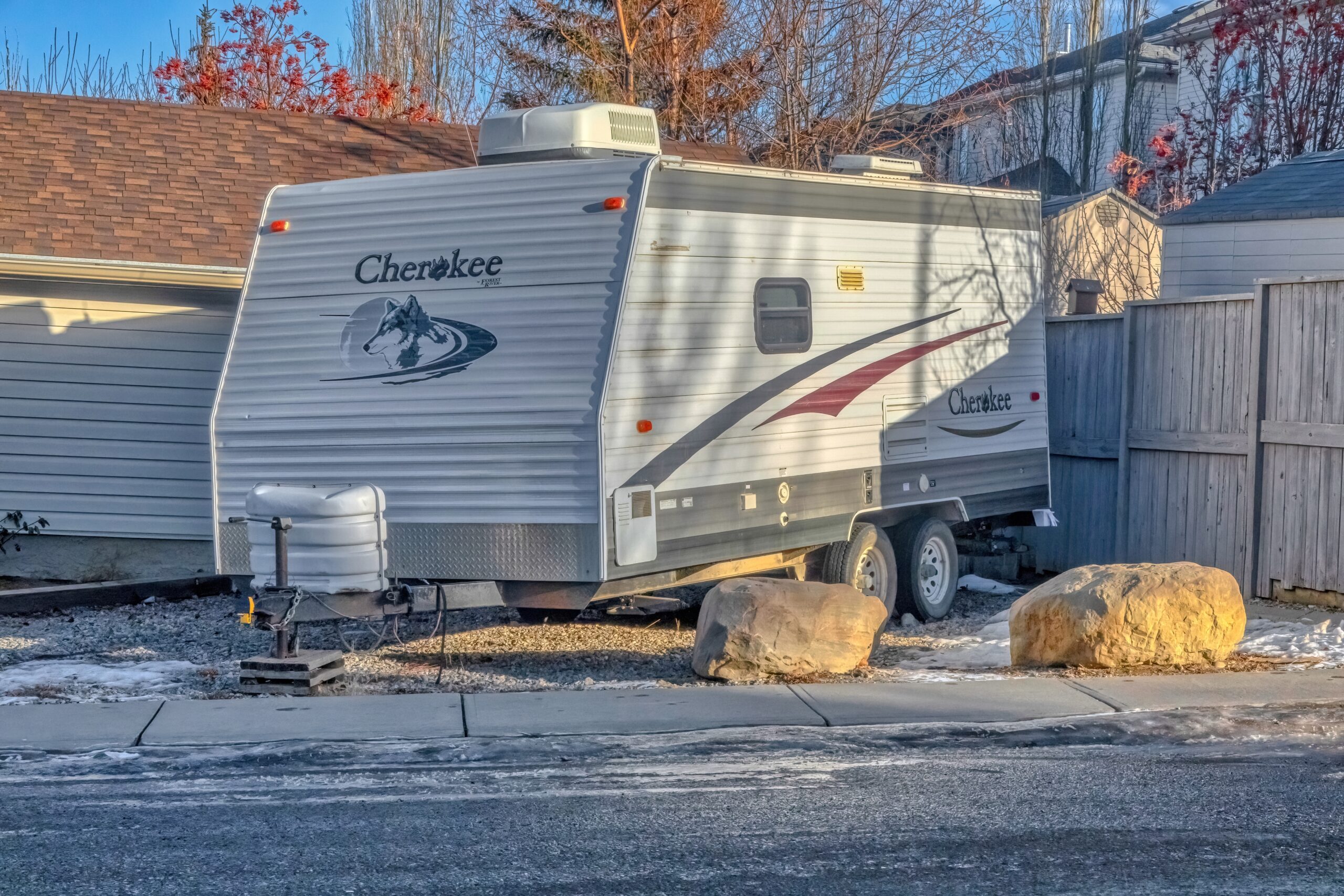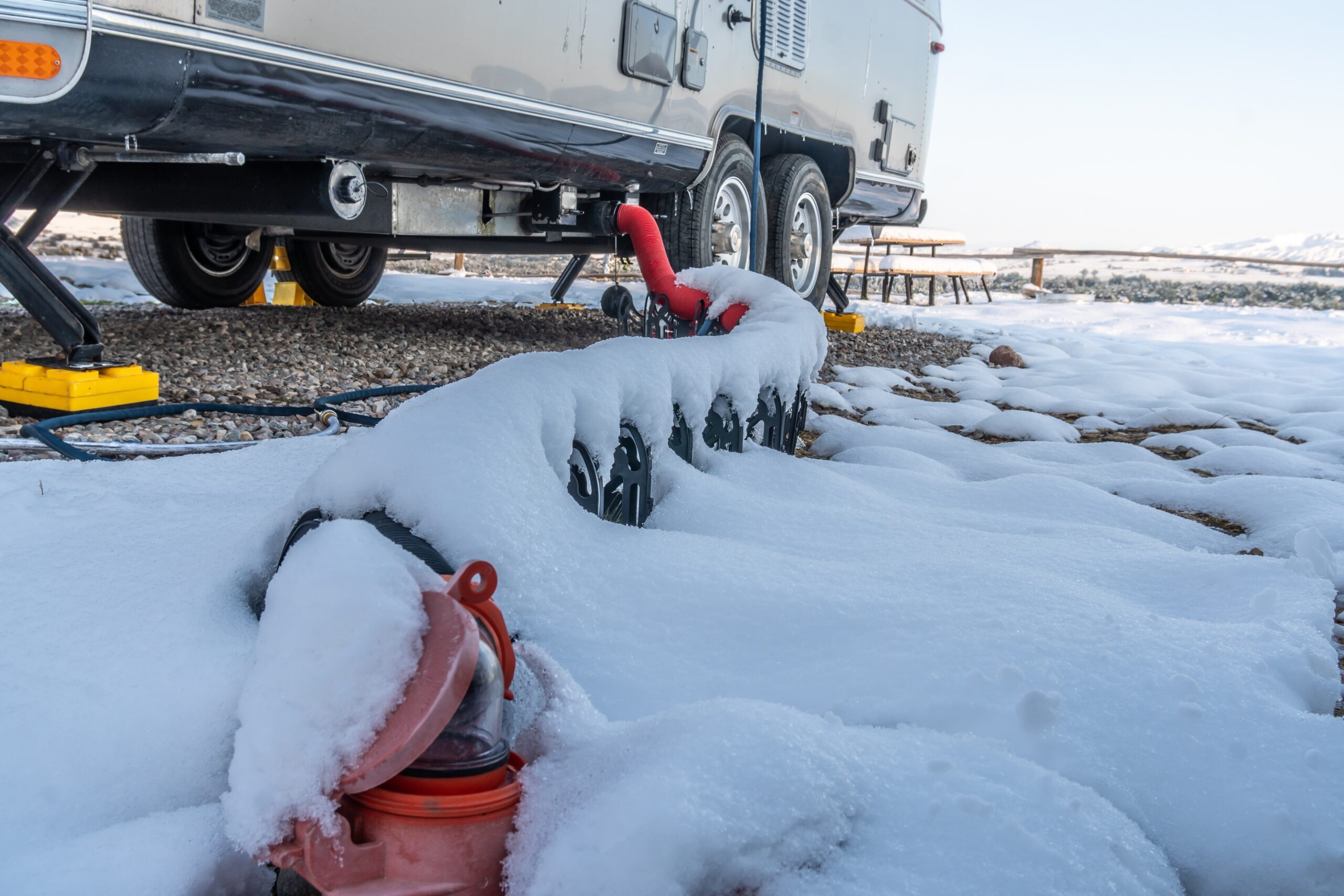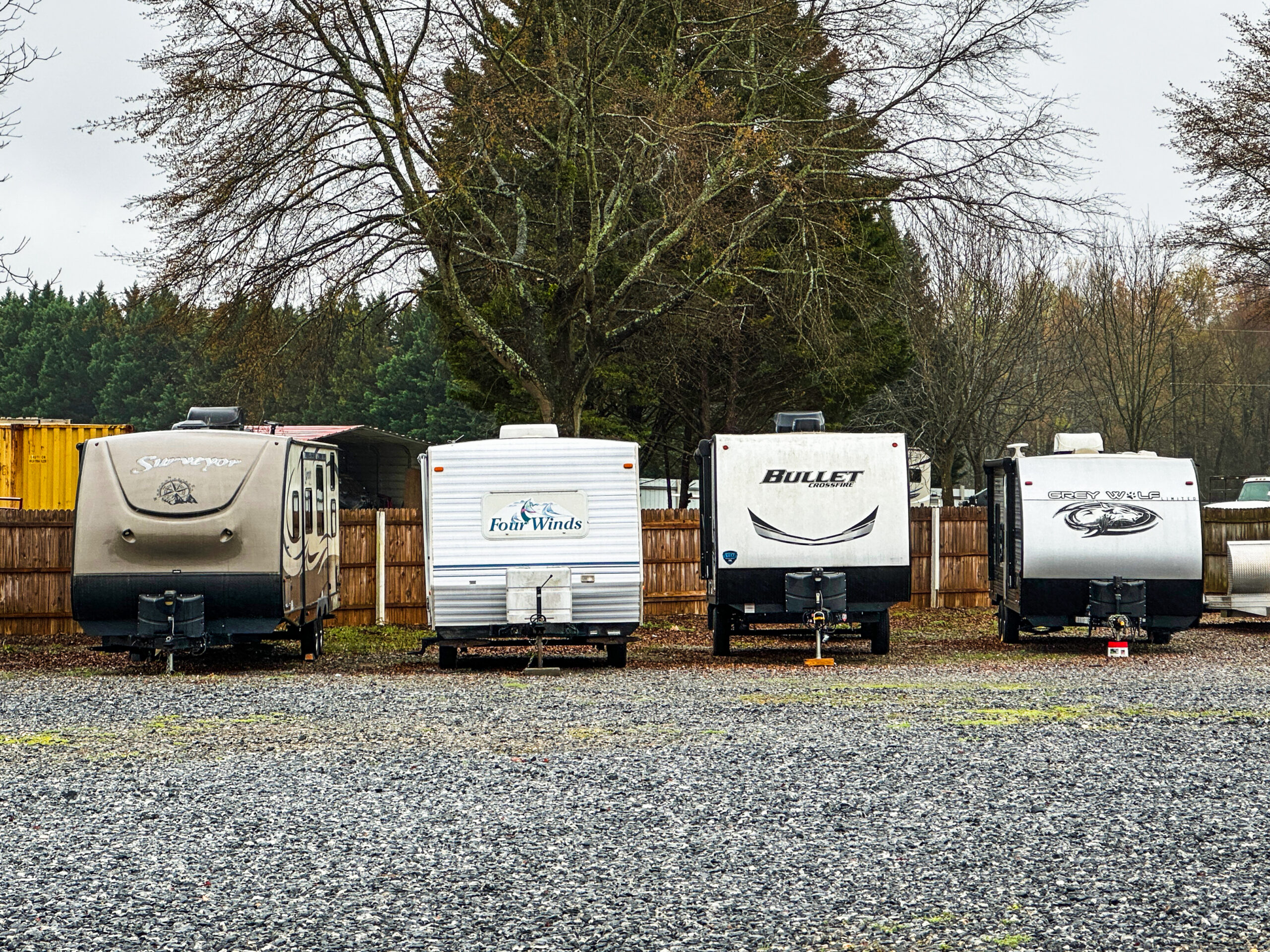
Don’t Let Winter Destroy Your RV Water System
We know that the weather can often change at the drop of a hat, but this is ridiculous. A weather system that recently dropped temperatures as much as 60 degrees in 24 hours brought powerful winds to Utah and heavy snow to parts of Colorado, Montana, and Wyoming.
While this is an extremely infrequent occurrence, it’s a stark reminder that winter is ready to pounce. For some RVers, that means camping season is coming to a close. Not all RVers, of course. For the year-rounders, the snowbirds, and the winter lovers, it may just be starting. But for a good number of us, the time to start winding down is rapidly approaching.
As a result, it’s not too early to think about winterizing your RV water system to ensure that it will be in tip-top condition when the flowers are back in bloom next spring.
Winterizing your RV water system
A critical aspect of that process is winterizing your RV’s water systems. The main reason, as you might expect, is that if any water remains inside your RV—in the holding tank, the faucets, the toilet, anywhere—it can potentially freeze and cause serious damage.
Draining your plumbing is the first step in RV winterizing. If you’re a do-it-yourselfer, we’d like to offer a handy checklist so you’ll know what to do and how to do it. This is intended to be a basic guide and should not be considered a definitive checklist for every RV. Check your owner’s manuals for any unit-specific winterizing guidelines.
Drain holding tanks
- Gray and Black: Drain and flush the gray and black holding tanks at a certified dump station. If your RV doesn’t have a built-in tank flushing system, clean the black tank out with a wand attachment at the end of a hose.
PRO TIP: You should also lubricate the termination valves with WD-40.
- Fresh Water: Drain the fresh water holding tank, which will remove water that could potentially cause your pipes to freeze and burst. Plus, it will help you avoid getting sprayed when you open the drains or unscrew the plug on your water heater.
PRO TIP: Drain all water from the system at the low point drains. If you need help locating the low point drains, your owner’s manual should be able to help.
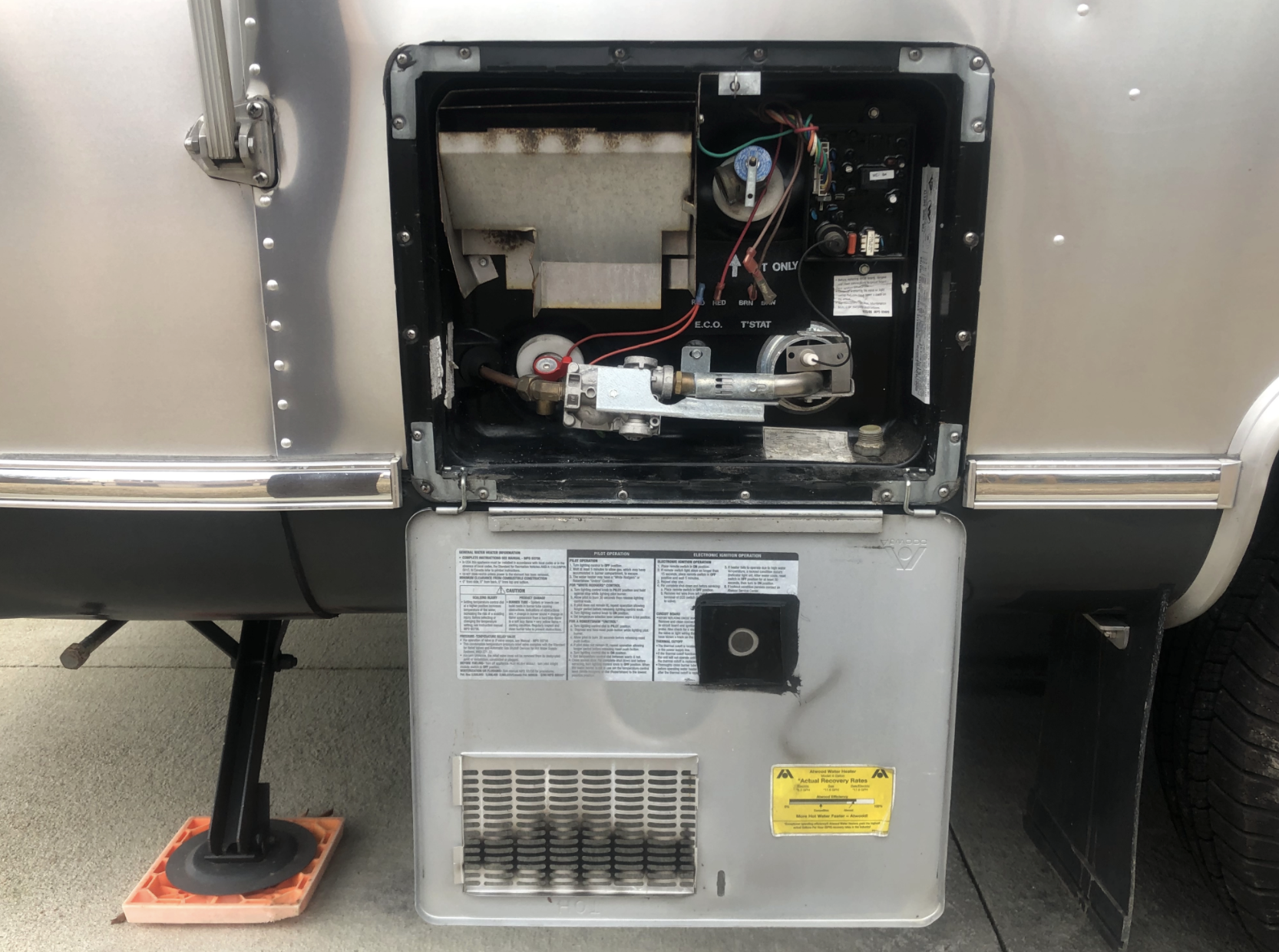
Drain the water heater
Open a hot water faucet to relieve any pressure in the lines. Drain your RV water heater tank and leave the drain plug open. (Caution: never drain the water heater when it is hot or under pressure. Also, make sure to turn off the 110-volt switch to the heater and also ensure that no water is connected to the RV.)
PRO TIP: This is also a good time to clean the inside of the tank with a wand attachment at the end of a hose.
Drain the faucets
Open all the hot and cold water faucets to help get any remaining water out of the system. You may elect to blow compressed air into the pipes after to help remove more water; some people will also use their RV’s water pump.
But each method can cause problems if not used properly, including burst pipes or pump damage. Recap the drains and close the faucets when complete. Don’t forget to drain any under-counter or countertop water filtration systems.
PRO TIP: Remember to also flush the toilet and attend to the outside shower.
Add RV antifreeze
Always be sure to use RV antifreeze and never use automotive antifreeze in your RV water system. Use a water heater bypass kit so you don’t waste antifreeze, since the antifreeze will fill the water heater tank before it goes through your lines.
If your rig has a water filtration unit, bypass it as well, remove it and install a filter bypass kit, which will prevent the antifreeze from ruining the water filter.
There are several methods to choose from when adding antifreeze:
- Install a water pump converter kit.
- Disconnect the inlet side of the water pump (line coming from freshwater tank) and install a bypass hose to pull directly from the antifreeze bottle.
- You can also add antifreeze from the outside water intake using a hand pump.
Once you choose your method, begin to run the antifreeze through the lines. It’s best to start at the highest point—i.e., the showerheads—and work your way down. Start with the shower closest to the pump and turn on the hot and cold faucets until you can see the antifreeze flow through the line. Repeat this process for sinks, hoses, and toilets. Flush the toilet until anti-freeze runs through the bowl.
PRO TIP: Don’t miss any exterior hoses and sinks.
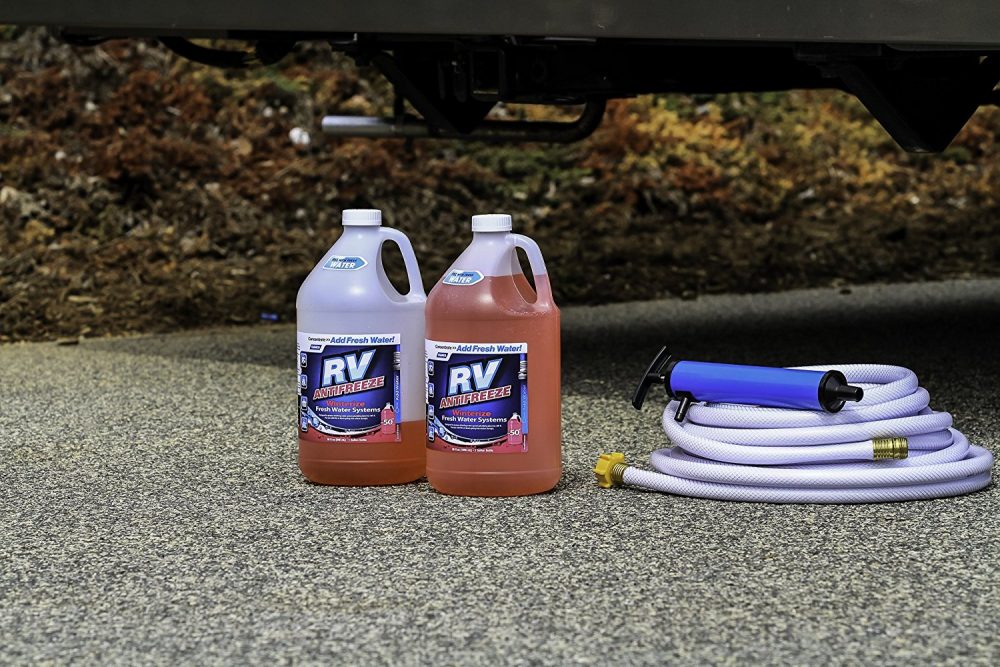
Don’t forget drains and check valve
After pumping water through the system, pour a small cup of antifreeze down each drain. Also, pour a few ounces of antifreeze in the toilet and flush it into the holding tank, which will prevent any remaining water from freezing.
Add about an ounce of RV antifreeze into the city water inlet to protect the check valve. And drop a few ounces into the black and gray tanks to winterize their check valves.
PRO TIP: Remember, the U-traps are a spot where water often collects and some may still remain, despite your best efforts. That’s why the antifreeze in the drain is so critical.
Last steps
- Wipe down all sinks, tubs, and showers thoroughly to remove any excess RV antifreeze in the basins because RV antifreeze can stain.
- Make sure all the faucets are closed.
- Check your owner’s manual for specific winterizing instructions for ice makers and washing machines, if applicable to your RV water system. They can differ greatly from rig to rig.
It’s always a bit sad to see your RV go into hibernation for the winter. But if you winterize it properly, especially the RV water system, it will give you a warm, fuzzy feeling until the weather heats up again.
Keith Bernard is the CEO of CLEAR2O®, a leading designer and manufacturer of water filtration systems.

